Investing in stocks is an American pastime. Before the Internet, shares of stock were purchased directly from companies and “stock certificates” were issued or you purchased stock from a stockbroker, and they held your shares at their institution. Mutual funds were also purchased directly from the fund companies or a stock broker.
As a result of the pre-internet days, many people still own actual stock certificates or have their shares held at a “holding company” and many mutual funds are held directly with mutual fund companies. Often, a person will own dozens of assets scattered across dozens of institutions.
This creates a problem in several ways – assets may be lost or forgotten, tax record keeping is a nightmare, and estate administration can be expensive and take many years to resolve. Fortunately, there is an easy solution to this problem.
What Is A Custodian?
In the 1970’s, we experienced the rise of “discount brokers,” such as Schwab, Fidelity, and TD Ameritrade. These firms act as “custodians” to hold assets such as stocks, bonds, and mutual funds. They can hold almost any publicly traded asset. Think of them as a supermarket – instead of groceries, the shelves are lined with stocks, bonds, and mutual funds. You can buy anything you want.
What is the cost of holding your assets at these institutions? They make their money in two ways – when you make transactions such as buying or selling stock and when you hold money in their money market funds. If you move all your assets such as stock certificates or mutual fund holdings into these accounts, there is no charge for keeping them there. As long as you are not buying and selling assets or holding a bunch of cash, the underlying fees are minimal.
What Do You Get In Return?
- Recordkeeping is much easier – all your dividends, interest, and capital gains are reported on one statement.
- It is much easier to track what you paid for the asset – also known as the “basis” of the asset. This is important for tax purposes.
- Best of all, it makes estate transfer much simpler. Instead of spending hours of time and loads of money on attorney fees transferring multiple assets, you can transfer the account all at once. In addition, instead of having an asset go through your will and probate, you can fill out a “transfer on death” form so the assets pass to your beneficiaries directly.
When you begin the process of consolidating assets, consider discussing the transfers with your accountant, estate planning attorney, or your financial planner to help check titles and understand any tax or estate issues. It is significant work to get all your assets consolidated, but well worth the effort and can potentially create huge savings for you and your family.



